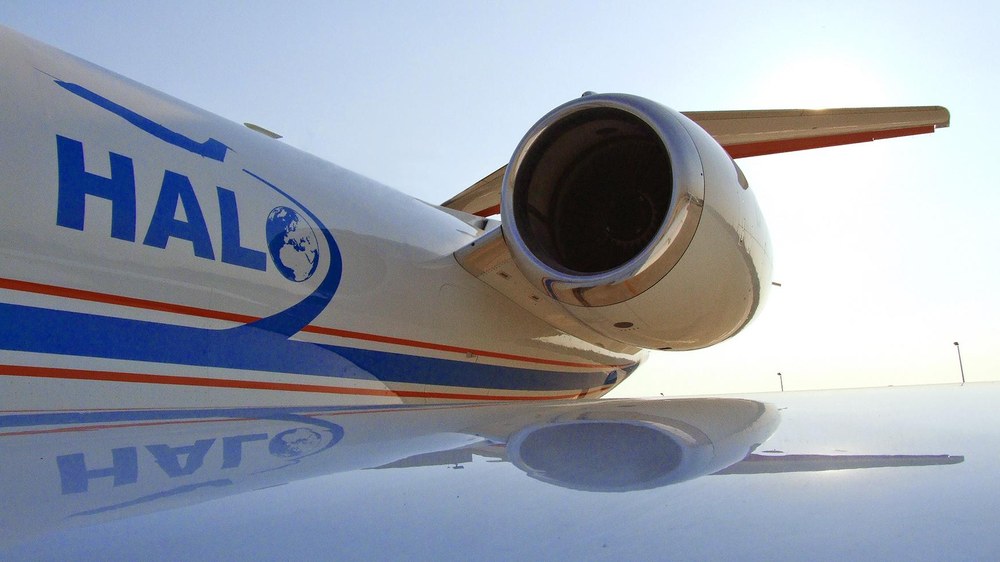On the trail of the greenhouse gas methane – Flight test mission planned

International policy-makers have set ambitious goals to reduce greenhouse gas emissions as part of the Paris Agreement regarding climate change. Monitoring emissions will play a crucial role here. Greenhouse gas sources and sinks need to be investigated as accurately as possible in order to obtain reliable climate forecasts. In spring 2017, a series of German flight tests led by the German Aerospace Center (Deutsches Zentrum für Luft- und Raumfahrt; DLR) will make a significant contribution to international efforts in this area. The research aircraft HALO Project Website is set to target carbon dioxide and methane, the two most significant greenhouse gases, with its innovative instruments, acquiring data stretching from Europe to North Africa, which is currently lacking. From 30 November to 2 December 2016, scientists from eight countries met at DLR's site in Oberpfaffenhofen to prepare the CoMet (carbon dioxide and methane) mission for HALO and to optimally combine international research activities.
Methane – Greenhouse gas with strong impact
"The greenhouse gas methane is often also referred to as the ‘little brother’ of carbon dioxide,” says Andreas Fix from the DLR Institute of Atmospheric Physics. “Despite the fact that its concentration in the atmosphere is 200 times lower than carbon dioxide, the relative global warming potential of methane is huge and it is important to take this into account in more detail for climate forecasts in the future.” According to the Intergovernmental Panel on Climate Change report from 2013, an emitted methane molecule has 86 times the climate impact of a carbon dioxide molecule over the first 20 years. “Over 100 years, this value reduces to a still-significant 34 times the global warming potential, as methane decomposes more quickly in the atmosphere,” continues Fix, who is heading the CoMet research mission.
The CoMet mission, initiated by DLR, the Max Planck Institute for Biochemistry and the Universities of Heidelberg and Bremen will for the first time use the CHARM-F (CH4 Atmospheric Remote Monitoring) Lidar measuring device developed at DLR for high-resolution methane detection alongside other instruments. “This new technology enables methane to be measured from a great distance at high precision independently of sunlight,” explains Fix. From 2021, a similar instrument on board the German-French satellite mission MERLIN is set to monitor regional and global emissions of the greenhouse gas methane from space. Thanks to this mission, researchers are expecting to finally obtain a comprehensive set of data.
At the meeting in Oberpfaffenhofen, researchers discussed pressing scientific questions relating to the atmospheric carbon cycle, in which the release and decomposition of carbon dioxide and methane play an important role. “We want to derive optimum measurement strategies from this for the CoMet mission,” explains Fix. “We also want to organise future collaboration now between the national and international groups of researchers and make plans regarding how to make joint, effective use of the data."
Research flights between Finland and North Africa
The flight tests of the CoMet mission with German atmospheric research aircraft HALO are currently planned over four weeks from April to May 2017. The combination of range, altitude, payload and comprehensive instrumentation makes the aircraft a truly unique research platform. The flights with HALO are conducted between Finland and North Africa, with HALO carrying the most state-of-the-art measuring instruments currently available, including Lidar CHARM-F and a cavity ringdown spectrometer from the Max Planck Institute. Joint individual flights will also be conducted with an additional two smaller aircraft – DLR’s Cessna Grand Caravan, equipped with a quantum cascade laser system, and a Cessna 207 from the Freie Universität Berlin, which carries a spectrometer system on board. The HALO flights with the Cessnas will focus on two particularly significant areas from a scientific point of view: the Upper Silesian coal field, which is one of Europe’s largest sources of methane due to the mine gas emitted from the many anthracite mines, and the Berlin region that, due to its remoteness surrounded by sparsely populated regions, is an interesting area to explore the greenhouse gas flows of a metropolis.


